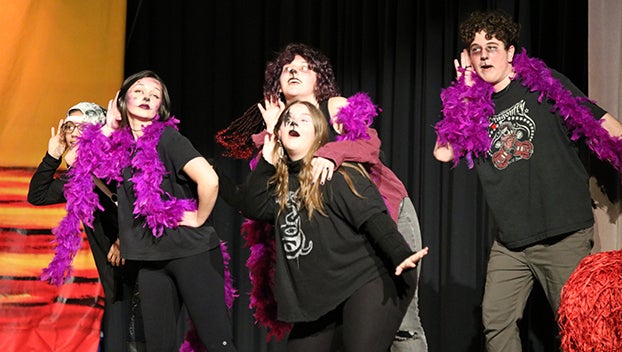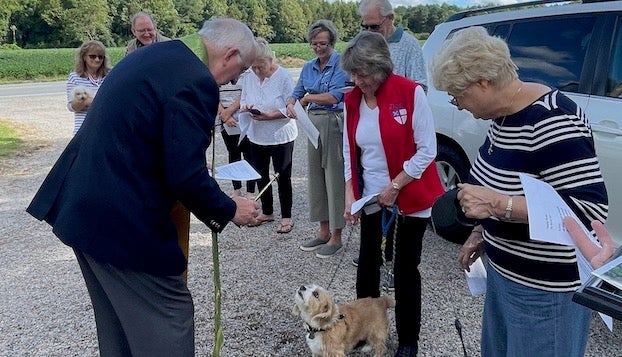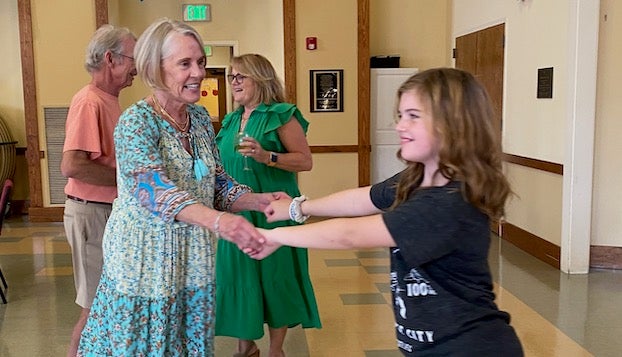Washington museum documents Underground Railroad
Published 8:02 pm Friday, February 24, 2017
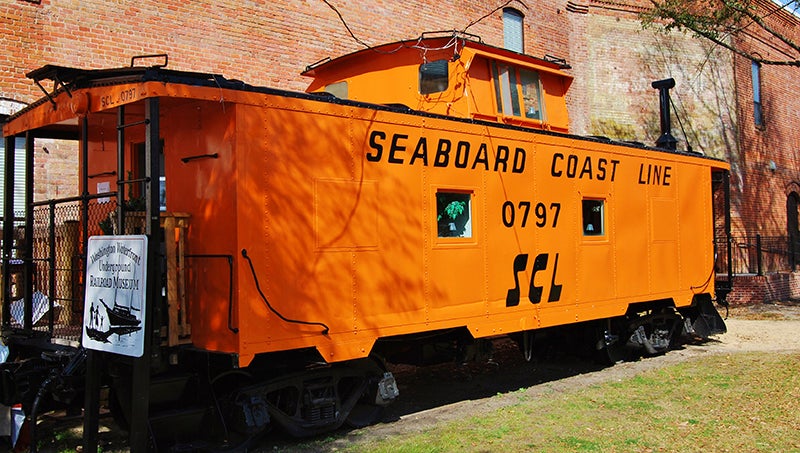
- The Underground Railroad Museum in Washington. (Daily News file photo)
A small, compact museum near the Washington waterfront is documenting local history in a big way.
The Washington Waterfront Underground Railroad Museum opened its doors June 1, 2016; in the intervening months has welcomed thousands of visitors from 38 states and seven countries, including travelers from Germany who were tracing their ancestry to Beaufort County.
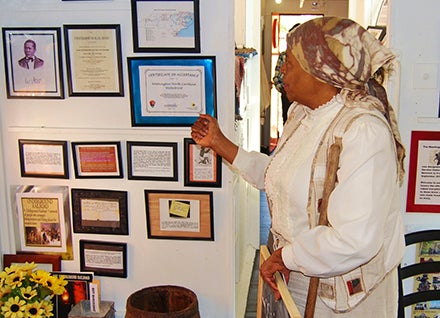
GUIDED TOUR: Leesa Jones leads a tour through the museum, pointing out various documents she has collected.
On a recent Saturday morning, Leesa Jones was joined by her husband, Milton, for a special tour and theatrical presentation for a group of Aurora citizens, including students from S.W. Snowden’s SPLASH after school program.
The hosts performed songs and dances that were part of the culture of African American slaves, and they shared information about the underground railroad operated in Beaufort County more than 150 years ago.
One story Leesa Jones shared was the role black-eyed peas played in the quest for freedom. The peas provided affordable nourishment for slaves on the run; the peas were cooked down until they contained practically no liquid, limiting spills on clothing that would make it easier for bloodhounds to track their prey. Served in bowls fashioned from burlap, they were perhaps the first “food to go” offered in the area.
But black-eyed peas played a much bigger role. According to Jones, abolitionists used the peas as a code to warn slaves who planned to escape aboard vessels departing the Washington waterfront that the timing wasn’t right for such a venture. The peas were quietly distributed along the waterfront to indicate that there were “too many eyes watching.”
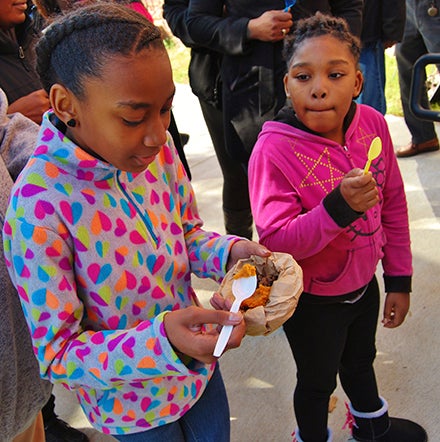
YUMMY: Aniyah Weatherford (left), a fifth-grader at S.W. Snowden School, tastes portions of black-eyed peas and baked sweet potatoes while third-grader Darnasia Tatum waits her turn.
Likewise, according to Jones, bright yellow sunflowers conveyed the same message, warning that slave owners, slave drivers and slave holders were in town looking for escaped slaves. Again, “too many eyes are watching” was the warning.
The Aurora students were especially receptive to the history shared during the presentation, and they took a liking to the black-eyed peas and sweet potatoes served, too.
“I think they were delicious; I’d never tasted black-eyed peas before,” said Aniyah Weatherford, who attends fifth grade at Snowden. “I learned all about my ancestors and how slaves escaped.”
Milton and Leesa Jones first began sharing the results of their tireless research into Beaufort County’s past by “walking up and down Main Street sharing the stories of slavery,” noted Leesa Jones. She added that a large slave market once stood near the intersection of Main and Market streets.
The couple generated such interest that plans were laid for a museum, which is now overseen by Leesa Jones and Rebecca Clark under the auspices of the Washington Harbor District Alliance. They are proud that the museum has been certified as making a significant contribution to the understanding of the Underground Railroad. The museum is one of eight such sites in North Carolina to be listed as a National Park Service Network to Freedom Site; others in the state include Somerset Place, Roanoke Canal Trail and the Great Dismal Swamp.
The museum is presently open for tours Fridays, noon to 4 p.m.; Saturdays, 11 a.m. to 4 p.m. and Sundays, 2 to 4 p.m. For more information, contact Jones at 252-833-0995 or Clark at 843-810-4300.
Donations to support the museum may be sent to Washington Harbor District Alliance, P.O. Box 1988, Washington, N.C. 27889. Please write Underground Museum on the memo line.
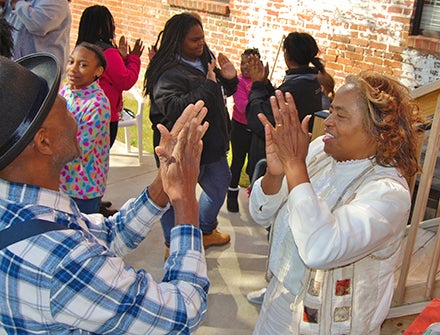
SHARING HISTORY: Leesa and Milton Jones lead a toe-tapping song and dance presentation for Aurora residents visiting the museum.



